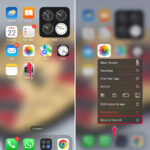Taking photos for a clothing brand can be tricky, but crucial for online sales. This dfphoto.net guide provides a comprehensive overview of clothing photography, delving into various styles, essential equipment, and practical steps to capture compelling images that resonate with your target audience and boost your brand’s online presence. Whether you’re aiming to enhance your product presentation, create engaging social media content, or elevate your brand’s visual identity, mastering the art of clothing photography is paramount. By following these guidelines, you can create visually stunning images that drive sales and solidify your brand’s presence in the competitive fashion market.
1. Understanding the Importance of High-Quality Clothing Photography
Are you wondering why high-quality photos are so important for your clothing brand? High-quality clothing photos are vital because consumers increasingly shop online, relying on images to make purchasing decisions. According to a 1WorldSync survey, 50% of shoppers in 2023 bought clothing online that they previously would have purchased in a brick-and-mortar store. Good imagery can increase trust and sales for your online store.
Without the ability to physically inspect clothing, customers depend on visuals to assess garments. More than half of shoppers consider brand- or retailer-provided imagery when deciding to buy clothing, according to a 2023 PowerReviews survey. Therefore, understanding the right techniques, tools, and approaches is key to attracting your target audience, showcasing the quality of your products, and, ultimately, driving sales. By implementing these strategies, you can enhance your brand’s appeal, engage potential customers, and stand out in the competitive online market.
2. Exploring Different Clothing Photography Styles
Are you looking to diversify your clothing photography? Online stores now use a wider range of product photo styles to cater to a broad consumer base. Consider flat lays, model shots, and lifestyle images to give context to your clothing.
2.1. Flat Lay Photography
What are the benefits of flat lay photography for clothing? Flat lay clothing photography presents apparel on a flat surface, showcasing colors, textures, and styling possibilities. This method is perfect for showing off entire outfits without needing a model.
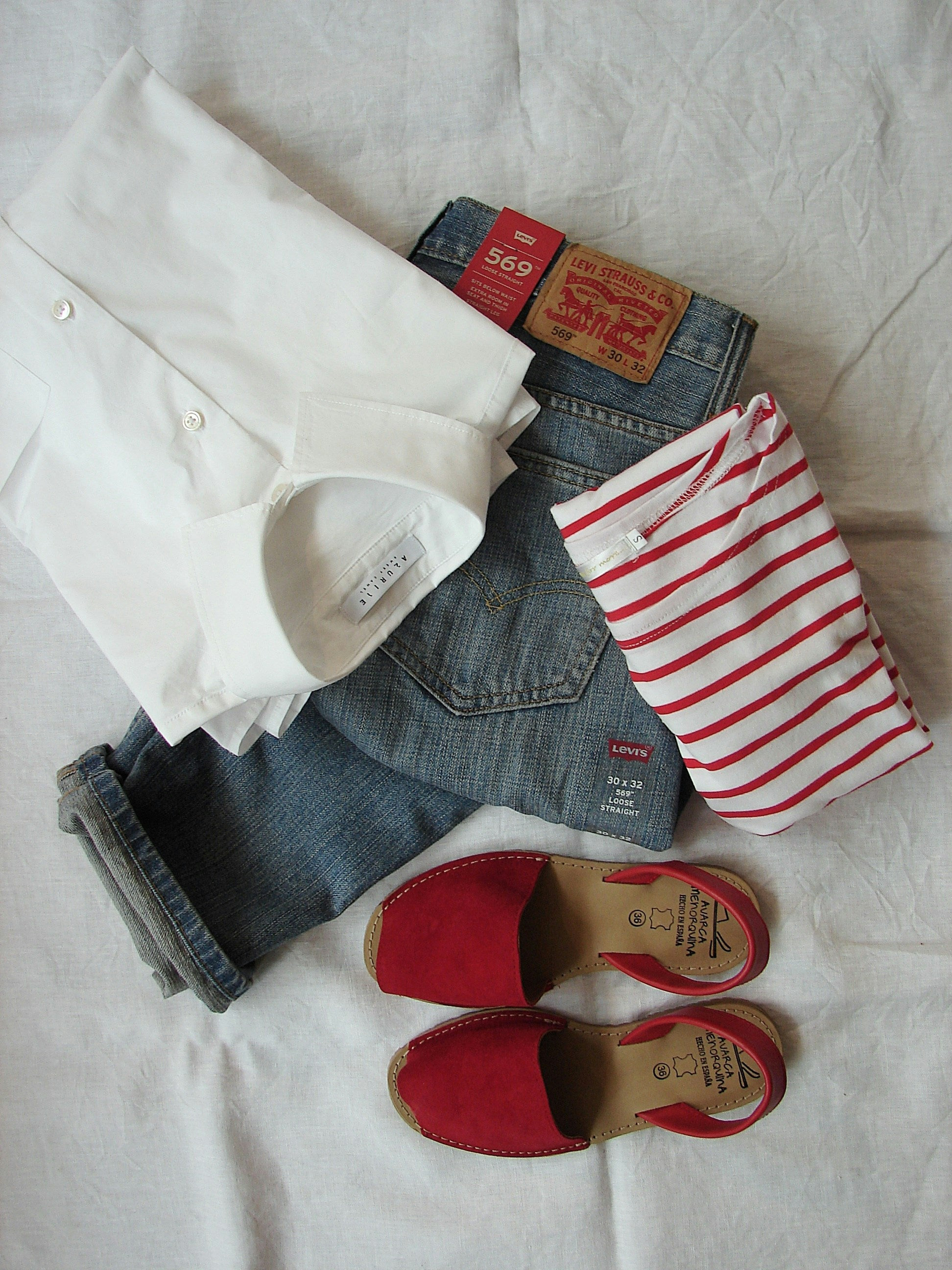 Jeans, a white oxford, red shoes, and a striped red and white shirt on a textured taupe background
Jeans, a white oxford, red shoes, and a striped red and white shirt on a textured taupe background
The textured background gives a stylized look to this flat lay, which features a few pieces of clothing and accessories.
Intentional color palettes and themes make flat lays visually appealing, enhancing the presentation of your clothing line. This approach not only highlights the aesthetic appeal of the garments but also provides customers with styling ideas, increasing their engagement and potential purchase interest.
2.2. Models and Mannequins
Why should you use models or mannequins in clothing photography? Modeling garments on real people helps customers understand how the clothing will fit. In 2023, fit was the number-one reason for clothing returns, according to Power Reviews.
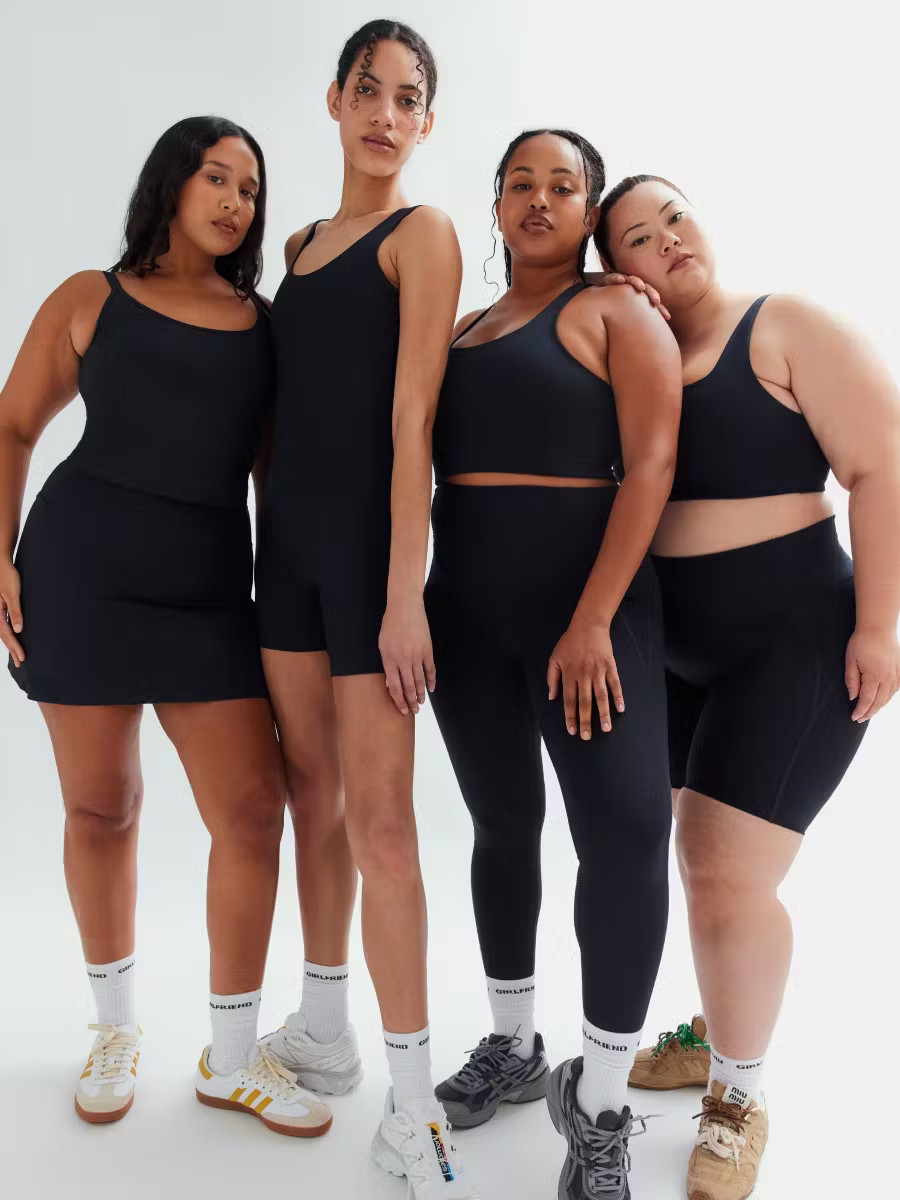 Four women wearing workout clothes stand next to each other
Four women wearing workout clothes stand next to each other
Activewear brand Girlfriend Collective is known for showing its clothing on a range of body sizes.
Using a range of models with different body types can provide customers with a better idea of how the clothes will look on them. According to research from the Santa Fe University of Art and Design’s Photography Department, in July 2025, showing diverse body types increases customer confidence and reduces returns. If models are not within your budget, mannequins can effectively display how garments drape and fit.
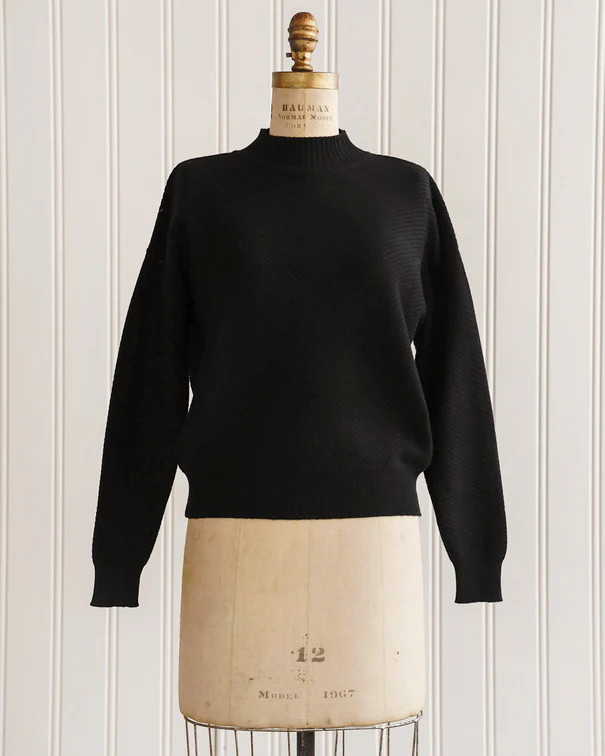 A black sweater on an antique mannequin
A black sweater on an antique mannequin
Adored Vintage uses an antique mannequin to show the shape of the dress while also emphasizing the label’s retro branding.
Mannequins can still display the way your garments drape and fit on the human form.
2.3. Lifestyle Photography
What impact does lifestyle photography have on clothing sales? Lifestyle shots inspire customers by showing clothing in real-world settings, highlighting colors, fits, and styling options. Shooting in natural light provides a realistic context that resonates with potential buyers.
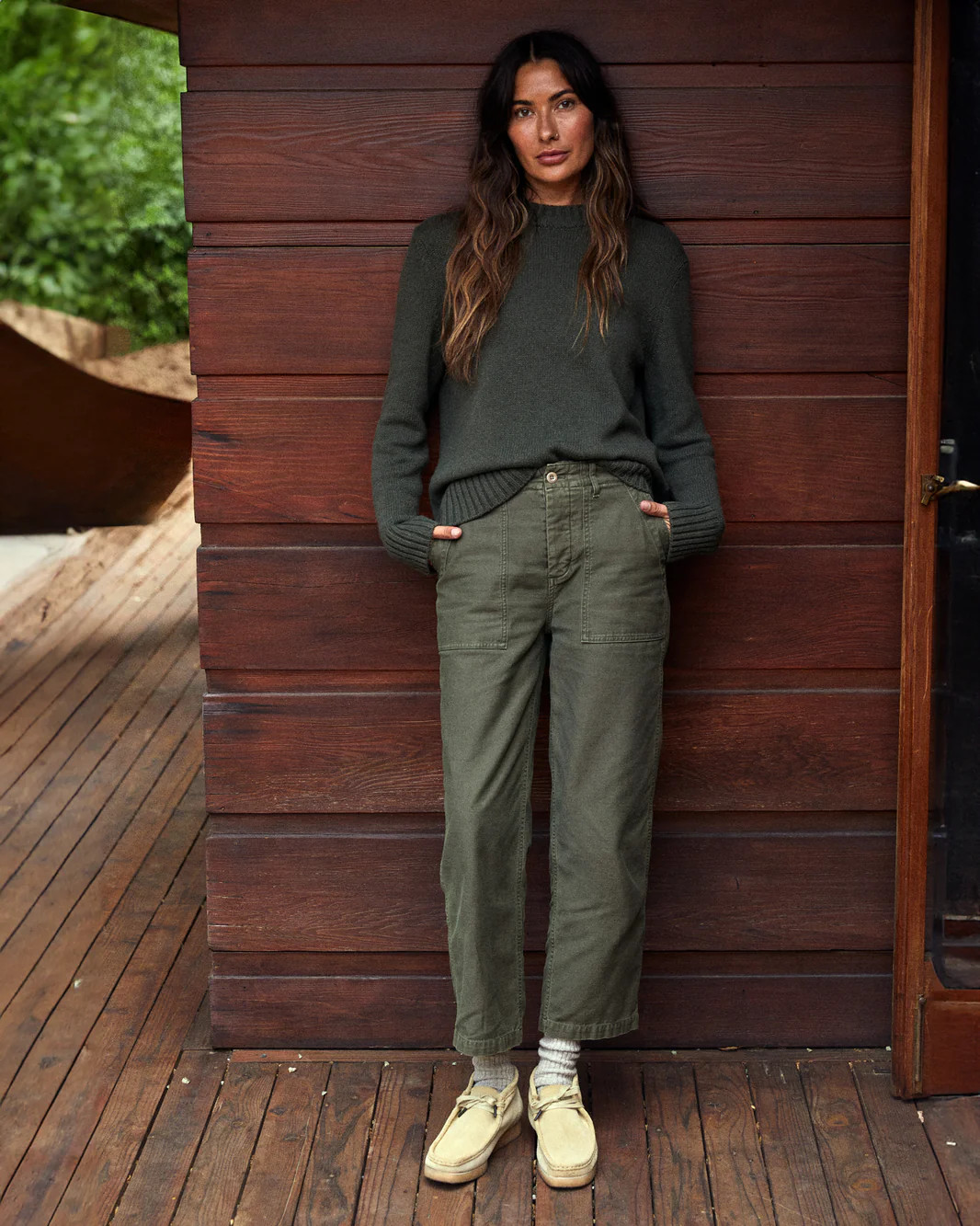 A woman leans against a wooden cabin in a monochromatic green outfit
A woman leans against a wooden cabin in a monochromatic green outfit
The rich green of the model’s monochromatic outfit is mirrored by the green and brown tones of their surroundings.
Consider visually appealing locations that complement your clothing line’s color palette. For example, earth-toned clothing can be photographed in lush forests or wooded parks. Lifestyle shots not only display the clothing but also tell a story, creating an emotional connection with your audience and increasing their likelihood of purchase.
3. Assembling Essential Equipment for Clothing Photography
What equipment do you need to photograph clothing effectively? You don’t need a large studio; a small room or blank wall can work. Essential equipment includes a camera, tripod, lighting, and backdrop.
3.1. Camera Choices
What type of camera is best for clothing photography? Newer smartphones can take great casual product shots, especially for social media. However, for more professional images, a DSLR or mirrorless camera is recommended.
Mirrorless cameras have the latest features, while DSLRs can be more budget-friendly. According to Popular Photography magazine, mirrorless cameras are preferred by 60% of professional photographers due to their advanced features. A 50mm lens is a versatile choice for studio photography, offering an excellent focal length for various shots.
3.2. Lighting Setup
What lighting is best for clothing photography? Artificial lighting is the industry standard for studio shoots. Three-point lighting, using a key light, fill light, and backlight, is ideal for brightening shadows and highlighting details.
The key light is the primary light source, the fill light illuminates the opposite side, and the backlight goes behind the product. This setup allows you to showcase specific details like stitching and graphics, enhancing the overall quality of your images.
3.3. Backdrops and Backgrounds
Why are backdrops important for clothing photography? Backdrops, usually white or light gray, showcase the colors and textures of your clothing without distractions. Depending on the garment color, a slightly off-white or gray backdrop may be useful.
Sheets, large paper rolls, or canvas drop cloths can also serve as effective and affordable backdrops, providing a clean and consistent background for your product photos. This ensures that the focus remains on the clothing, allowing customers to appreciate the details and quality of the garments.
4. Step-by-Step Guide to Photographing Clothing
How do you approach a clothing photography shoot? Start by preparing your clothing, choosing a suitable location, setting your camera, taking the photos, and then editing the images.
4.1. Preparing Your Clothing
Why is clothing preparation crucial for photography? Details like wrinkles, lint, and loose stitches can impact your images. Carefully inspect each garment and use a lint roller to remove any imperfections.
Use an iron or clothing steamer to smooth out wrinkles, ensuring the clothing looks its best. According to a study by the Fashion Institute of Technology, well-prepared clothing in photos increases perceived value by 20%. Hang the pieces on a rack away from your working space until you are ready to shoot, keeping them clean and wrinkle-free.
4.2. Choosing Your Location
What factors influence location choice for clothing photography? For lifestyle shots, consider the time of day and the sun’s position. Warmer colors can be achieved during the golden hour (sunset), while cooler tones are captured at blue hour (dusk).
Tall buildings and dense foliage can affect available light, so plan accordingly. Location impacts the mood and style of your photos, so choose settings that complement your brand and clothing.
4.3. Setting Your Camera
What camera settings are optimal for clothing photography? Use manual or aperture-priority modes on a DSLR or mirrorless camera for full control over your images. Manual mode allows you to adjust aperture, focus, and shutter speed, while aperture-priority mode lets you choose the aperture while the camera adjusts the shutter speed.
Aperture affects the amount of light and the focus depth, while shutter speed captures motion or prevents blur. For smartphone photography, modify exposure and focus within the camera app settings, exploring the available functions to achieve the best lighting and focus.
4.4. Taking the Photos
How do you capture the best clothing photos? Mount your camera on a tripod to avoid camera shake and use your preferred mode to start shooting. Take multiple photos of each piece from various angles, rotating the garment, and incorporating close-ups.
Show the texture of your fabrics and all sides of each piece to provide customers with a comprehensive view. This thorough approach minimizes guesswork and enhances customer confidence when purchasing.
4.5. Editing Your Images
What post-processing steps enhance clothing photography? Photo editing includes background removal, color correction, applying filters, adjusting exposure, cropping, and resizing.
Editing software ensures your apparel photography shots are ready for distribution on your website and social media. Professional photographers often use Photoshop and Lightroom, but free online photo editing apps like Shopify’s Media Editor can also be effective. Color correction ensures accurate color representation, while adjusting exposure ensures even lighting.
5. Maximizing SEO for Clothing Photography
How can you optimize clothing photos for SEO? Optimizing your images for search engines involves several key strategies that enhance visibility and drive traffic to your website. These strategies include:
- Image File Names: Use descriptive and keyword-rich file names.
- Alt Text: Write descriptive alt text for each image, including relevant keywords.
- Image Size: Optimize images for web use to improve page loading speed.
- Structured Data: Use schema markup to provide search engines with more information.
- Contextual Placement: Place images within relevant and keyword-rich content.
By implementing these SEO techniques, you can improve your website’s search engine rankings, attract more organic traffic, and increase the likelihood of customers finding and purchasing your clothing items.
6. Addressing Common Challenges in Clothing Photography
What are the common challenges in clothing photography? Common challenges include dealing with wrinkles, ensuring accurate color representation, and managing lighting.
6.1. Overcoming Wrinkles and Imperfections
How can you eliminate wrinkles in clothing photos? Use a clothing steamer or iron to remove wrinkles before the photoshoot. For minor imperfections, photo editing can be used to smooth out any remaining creases.
Maintaining a wrinkle-free appearance ensures that the clothing looks its best and enhances the overall quality of the images. Consistent attention to detail in this area can significantly improve the perceived value of your products.
6.2. Achieving Accurate Color Representation
What steps can you take to ensure accurate color representation? Use color calibration tools to ensure your monitor displays colors accurately. Shoot in controlled lighting conditions and use color charts for reference.
Color correction during photo editing is essential to ensure the final images accurately reflect the true colors of the clothing. This accuracy is critical for customer satisfaction, as it helps them make informed purchasing decisions based on reliable visual information.
6.3. Mastering Lighting Techniques
How do you manage lighting for clothing photography? Use a combination of key, fill, and backlights to achieve balanced lighting. Experiment with different lighting setups to find the best configuration for your clothing.
Softboxes and diffusers can help soften harsh shadows and create a more even light distribution. Mastering lighting techniques is crucial for highlighting the details and textures of your clothing, resulting in high-quality, visually appealing images.
7. Integrating Video in Clothing Photography
How can videos improve clothing sales? Videos show movement and fit better than still photos. Short clips on social media can grab attention and increase engagement.
7.1. Types of Video Content
What kinds of videos are effective for clothing brands?
| Video Type | Description | Benefits |
|---|---|---|
| Product Showcases | Detailed views of clothing items, highlighting features and benefits. | Provides a comprehensive understanding of the product, increasing customer confidence. |
| Styling Guides | Demonstrations of how to style clothing items for different occasions. | Offers inspiration and encourages customers to explore different looks, boosting sales. |
| Behind-the-Scenes | Glimpses into the design and production process. | Builds trust and transparency, creating a stronger connection with the audience. |
| Customer Testimonials | Real customer feedback and experiences with the clothing. | Enhances credibility and provides social proof, influencing potential buyers. |
| Interactive Videos | Quizzes and polls that engage the audience and gather feedback. | Increases engagement and provides valuable insights into customer preferences. |
7.2. Optimizing Videos for SEO
How do you optimize videos for search engines?
- Descriptive Titles: Use keyword-rich titles.
- Detailed Descriptions: Write compelling descriptions.
- Relevant Tags: Add relevant tags.
- Transcripts: Include transcripts for accessibility and SEO.
- Thumbnails: Create eye-catching thumbnails.
8. Utilizing dfphoto.net Resources for Enhanced Photography Skills
Are you looking for more resources to improve your photography? dfphoto.net provides a wealth of materials, including tutorials, galleries, and community forums. These resources can help you refine your skills and stay updated with the latest trends and techniques in photography.
8.1. Exploring Tutorials and Guides
What tutorials and guides does dfphoto.net offer? dfphoto.net features detailed guides on various photography techniques, equipment reviews, and post-processing tips. These tutorials are designed to cater to both beginners and experienced photographers, providing valuable insights and practical advice.
8.2. Showcasing Your Work in Galleries
How can you showcase your clothing photos on dfphoto.net? dfphoto.net allows you to create a profile and upload your best clothing photos to its galleries. This can help you gain exposure and receive feedback from a community of fellow photographers.
8.3. Engaging with the Community
How can you connect with other photographers through dfphoto.net? dfphoto.net hosts forums where you can ask questions, share your experiences, and connect with other photographers. Engaging with the community can provide valuable learning opportunities and help you build your professional network. You can also visit our office at Address: 1600 St Michael’s Dr, Santa Fe, NM 87505, United States, or call us at Phone: +1 (505) 471-6001. Website: dfphoto.net.
9. Staying Updated with Current Trends and Techniques
How do you stay current with clothing photography trends? Follow industry blogs, attend workshops, and engage with the photography community to stay informed about the latest trends and techniques. Experimenting with new styles and approaches can help your clothing photos stand out and attract more customers.
9.1. Following Industry Blogs
What industry blogs should you follow? Stay updated with photography news by following blogs such as Popular Photography, Digital Photography Review, and PetaPixel. These blogs provide insights into the latest trends, techniques, and equipment in the photography world.
9.2. Attending Workshops and Seminars
What are the benefits of attending photography workshops? Workshops and seminars offer hands-on training and networking opportunities with industry professionals. These events can help you refine your skills and gain valuable insights into the latest trends and techniques in clothing photography.
9.3. Engaging with Photography Communities
How can you benefit from engaging with photography communities? Engaging with online and local photography communities can provide valuable feedback, learning opportunities, and networking connections. Sharing your work and participating in discussions can help you grow as a photographer and stay informed about industry trends.
10. Call to Action: Elevate Your Clothing Brand with dfphoto.net
Ready to take your clothing photography to the next level? Visit dfphoto.net today to explore our comprehensive guides, discover inspiring galleries, and connect with a vibrant community of photographers. Whether you’re looking to master new techniques, showcase your work, or stay updated with the latest trends, dfphoto.net has everything you need to succeed. Start your journey towards creating stunning clothing photos that captivate your audience and drive sales for your brand.
Clothing Photography FAQ
What is the best camera setting for clothing photography?
The best camera setting for clothing photography is typically manual or aperture priority mode on a DSLR or mirrorless camera. These settings allow you to adjust focus, shutter speed, and aperture value, resulting in high-quality images with sharp focus and correct exposure.
How much does clothing photography cost?
The cost of clothing photography varies widely depending on whether you do it yourself or hire a professional. Acquiring new equipment for DIY photography can cost around $5,000. Hiring a professional photographer can range from $200 to $500 per hour, and using models will require additional compensation.
How do you photograph clothing?
You can photograph clothing using flat lay techniques, lifestyle shots in realistic settings, on models or mannequins, or in a studio with a backdrop. Use multiple techniques to provide consumers with a comprehensive view of what they are buying.
How can I improve the lighting in my clothing photos?
Improve lighting by using a three-point lighting setup with a key light, fill light, and backlight. Experiment with different setups and use softboxes or diffusers to soften harsh shadows and create even light distribution.
What is the ideal backdrop color for clothing photography?
The ideal backdrop color for clothing photography is usually white or light gray. These colors showcase the clothing’s colors and textures without distractions. Depending on the garment color, a slightly off-white or gray backdrop may also be useful.
How important is editing in clothing photography?
Editing is crucial in clothing photography. Post-processing steps like background removal, color correction, adjusting exposure, and cropping can significantly enhance the final images and ensure they are ready for distribution on your website and social media.
How can video content benefit my clothing brand?
Video content can greatly benefit your clothing brand by showcasing movement and fit better than still photos. Short clips on social media can grab attention and increase engagement, while detailed product showcases and styling guides can provide valuable information and inspiration to potential buyers.
What are the best video types for showcasing clothing?
The best video types for showcasing clothing include product showcases, styling guides, behind-the-scenes glimpses, and customer testimonials. Each type offers unique benefits and can help engage your audience, build trust, and drive sales.
How can dfphoto.net help improve my photography skills?
dfphoto.net offers a wealth of resources, including detailed tutorials, inspiring galleries, and community forums. These resources can help you refine your skills, stay updated with the latest trends, and connect with other photographers.
What steps can I take to stay updated with clothing photography trends?
Stay updated with clothing photography trends by following industry blogs, attending workshops, and engaging with photography communities. Experimenting with new styles and techniques can help your clothing photos stand out and attract more customers.
